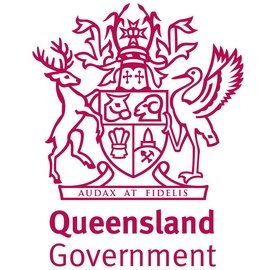A new study that forms part of the Australian Nurses Working in Schools Project has warned that the perception of school nurses needs to change, starting with better recognition of their expertise beyond offering direct medical care to students.
Drawing on the insights of five expert school nurses in non-government WA schools – who have 60 years of collective experience –researchers have revealed a string of ‘missed opportunities’ and glaring blind spots that are hampering their impact and chipping away at morale.
While teachers were commonly recognised for their contributions to pastoral care, student leadership, and student wellbeing, the school nurses reported their role was generally limited by comparison – with little opportunity for PD and with no defined career pathway in front of them.
Overworked and underpaid
Participants described the ‘high prevalence’ of unpaid overtime their jobs involved, saying they were often unable to take meal breaks during the day due to the number of urgent demands.
The significant amount of administrivia demanded of school nurses amounted to ‘invisible’ work, the study found.
“The time required to plan care for health issues such as diabetes, epilepsy, asthma, and anaphylaxis was often significant, but largely invisible.
“Administrative tasks such as data entry, following up with parents regarding medical action plans, out-of-date adrenalin autoinjectors, missing medical certificates, lost vaccination consent forms, Journal of Children and Young People’s Health 8 and related paperwork took up a significant amount of time,” researchers noted.
It was not unusual for parents or service providers to leave nurses’ requests for information hanging either, the study found, chewing up even more of their time.
One school nurse was given four hours per week to tick off administrative tasks, which the group deemed ‘entirely insufficient’.
“Participants reported that time spent caring for students with complex social needs was also undervalued, for example in cases of boarding school students from remote Aboriginal communities or from overseas,” researchers added.
On the periphery
Operating in unsuitable or sub-par workspaces also led school nurses to feel undervalued in their role, the study found.
“Space was so limited in some schools that one participant described using their office as a treatment room.
“This was an issue not only for the nurses themselves, but also for the quality of clinical care that could be provided,” researchers warned.
With so many students packed into a small space, confidentiality became an issue, while poor visibility threatened the safety of both staff and students.
Some school nurses also reported they were physically relegated to the margins of the school grounds, with health centres located in very isolated spots.
This stymied effective collaboration with wellbeing staff, with nurses raising the issue of who would be nearby to assist in the event of a medical emergency.
“…it was not uncommon for participants to find themselves working alone in the school health centre until the early evening.
“Darkness during the winter months and the proximity of the school health centre to the external boundaries of the school added to their safety concerns,” researchers added.
Limited by leadership
Nurses reported school leadership fundamentally misunderstood the scope of their expertise and responsibilities.
Rather than being viewed as experts on student health, they felt seen as mere ‘recipients of health directives from education staff’.
Sometimes excluded from discussions about student health issues, participants raised their frustration at the lack of invitation to collaborate or consult with staff.
Participants also felt marginalised in student health initiatives, remaining out of the loop when it came to addressing issues such as vaping or activities promoting good sleep, for example.
Similar issues were raised about mental health.
“Schools often perceived student mental health concerns to be the domain of the school psychologist, but anxious students were often sent to [the school nurse] when the psychologist was unavailable.
“Despite this being a common practice, participants were not typically appraised of the student’s school-based management plan,” the study found.
School leadership were also reluctant to fund or release school nurses to undergo professional development, it was reported – an irony given the importance placed on this for teachers, it suggested.
School nurses also reported leadership failed to grasp the professional responsibilities and regulatory obligations they have, nor the need to adhere to nursing standards of practice.
The case of demanding parents
Unreasonable parental expectations were yet another challenge the group were up against, the research found.
“…some parents viewed the school nursing service as a school-based entitlement when they were unavailable to manage their child’s health issues.
“Participants noted that parents often had high expectations in line with being a fee-paying customer.”
The nurses reported instances where parents would send their child in for assessment of an acute health issue – such as a weekend ankle sprain – and expect instant solutions or referrals.
“Participants worried that parents did not recognise a need for ongoing care and follow-up that could only be managed by the parent themselves,” researchers noted.
‘The tiniest papercut’
A huge concern raised by school nurses was the amount of work they did that could be better undertaken by other school staff.
On many occasions, students had been sent to the school nurse for very minor ailments that teachers could have dealt with: “the tiniest papercut”, one participant described it.
“First aid kits were typically located all over the school and school staff were aware of this, but the issue persisted.
“Some junior teachers were reluctant even to supervise the application of a Band-Aid in case this was not the right course of action,” researchers flagged.
Teachers should encourage students to use basic self-care strategies and guide children to manage any minor health issues independently, the nurses advised.
“School nurses are a valuable resource,” lead researcher Dr Anita Moyes from Edith Cowan University said.
“With better understanding of their capabilities and stronger opportunities for collaboration, they become key partners in the school community’s efforts to support every student’s health journey.”















